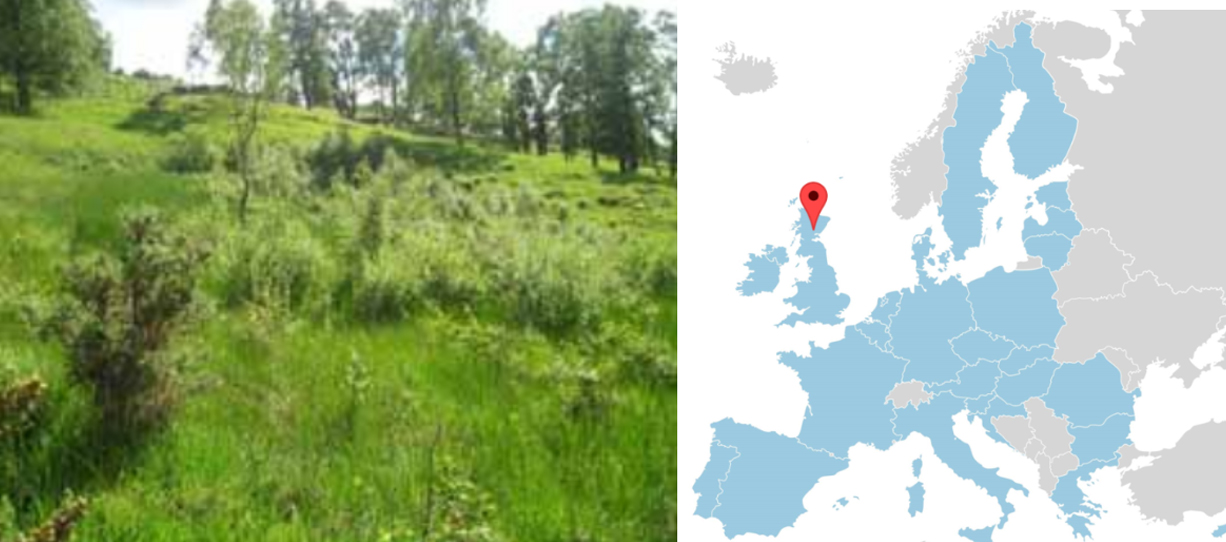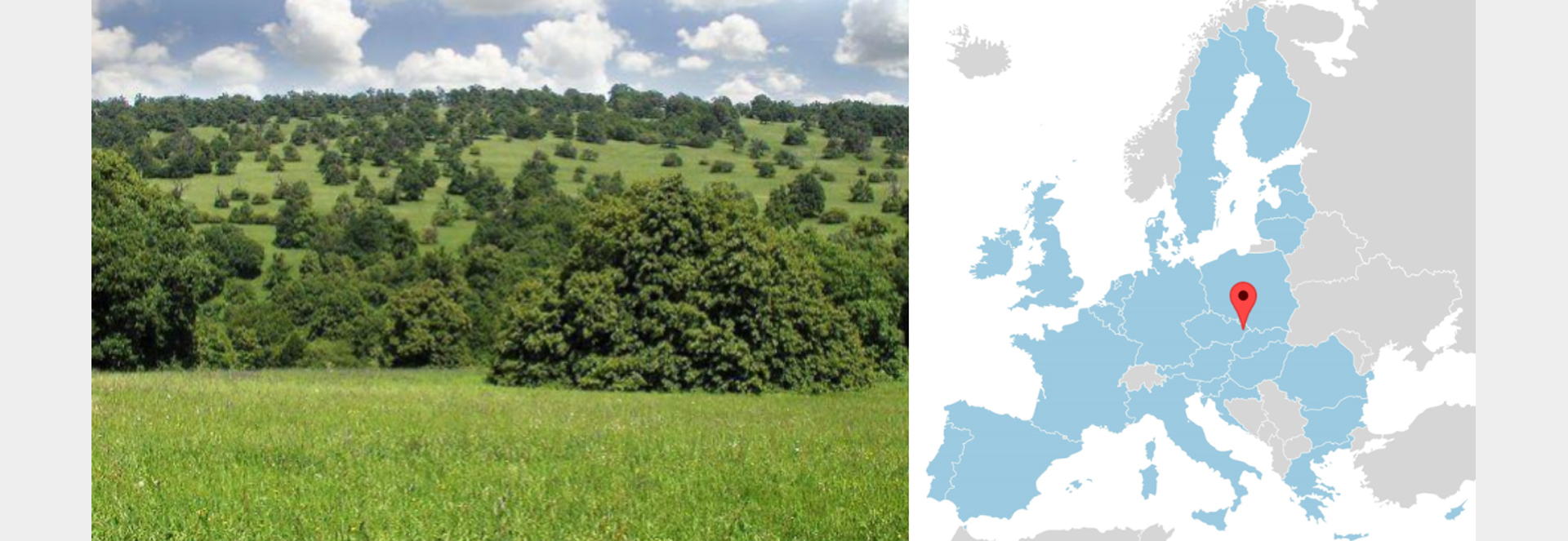

Some of the measures under the different conservation schemes will imply measures that affect the yield of a particular plot. Mostly, the aim is to shift the cultivation to a crop or management practice that is less intensive. As a result, the burden for water, soil and habitat quality will be lower. Other environmental benefits such as biodiversity and lower fossil fuel use are also linked to extensive farming 1. Because these measures affect the management quite substantially, the yield will also decrease.
For this class, grassland creation, agroforestry, afforestation and cultivation or fallow were defined as categories. These names are suggestive to the use of land prescribed by the conservation measure.

21 per cent of the European land is covered with grass 2. Yet, grassland is also being ploughed to create cropland, which is often more profitable. Because grassland provides several environmental benefits, compared to cropland, European governments created incentives to maintain grassland.

Agroforestry is the name for all kinds of agriculture that combine trees with crops or animals. Often this integration of cultivation types is done to make the land use more sustainable and to because land with two types of production (trees and crops/grass) yields more compared to the production of one cultivation type 3.

The afforestation of agricultural land is a practice that is promoted in a lot of regions in Europe, because of several environmental benefits this practice brings. Because farmers are not able to use their land in a productive manner anymore, the government provides financial incentives to take this measure.

Some crops are more environmentally friendly than others. Therefore, it would be beneficial if these crops would be cultivated more. Therefore, incentives are given to shift cultivation to certain crops, such as mixture of cereals and legumes, herbs and fallow ground.
⬤ Agri-environmental schemes ⬤ Greening ⬤ Less favoured area payment
| Category | Expected from farmer | Environmental benefits | Price | Examples of regions | Barriers | Opportunities |
|---|---|---|---|---|---|---|
| Certain crop ⬤ ⬤ | Sow mixture of herbs, mixture of legumes and cereals or certain crops |
| 200-2530 EUR/ha |
|
|
|
| Fallow ⬤ ⬤ | Keep plots fallow |
| 10-210 EUR/ha (Netherlands) |
|
|
|
| Agroforestry ⬤ ⬤ | Apply agroforestry on a field |
| 80% of all costs or 1808 EUR/ha for planting and 34 for maintenance |
|
|
|
| Afforestation ⬤ ⬤ | Afforest cropland |
| Afforestation: 3320-4950 EUR/ha, maintenance: 68-1900 EUR/ha |
|
|
|
| Grassland ⬤ ⬤ | Convert to or maintain (natural) grassland Establish wetlands |
| 61-2403 EUR/ha |
|
|
|

In Perthshire, a county in Scotland, an afforestation scheme was set up. Land that has previously been used for cattle stocking was afforested. The woodland creation was not done manually, but rather natural. Nevertheless, livestock was excluded to protect the tree seedlings. On smaller exclosures, the impact of excluding deer and rabbits was also tested.
Although a lot of effort is put into the regeneration of the native trees, the results were rather disappointing at first. For some native trees, seedlings could be found, but only in certain areas. Furthermore, no juniper seedlings could be found, although this was a key goal of the project. For this reason, seedlings were protected with individual guards and 200 oak and birch were planted. Although the regeneration is less natural, it could be expected that it would be more successful. The results of the second stage have not been reported yet.
Source: Hall, C., & Chapman, P. (2004). Agri-environment case studies – improving advice on practical habitat management. Aberdeenshire, UK. Retrieved from https://www.gov.scot/Resource/Doc/37428/0014237.pdf
| What: | Afforestation of grassland |
| Location: | Perthshire, Scotland, UK |
| Duration: | 11 year |
| Area: | 8,5 ha |
| Measures taken: | Livestock was excluded
Rabbits and deer also excluded Natural regeneration of forest |
| Results: | Four species of trees have 8 to 60 seedlings |

In the White Carpathians, in South-East Czech Republic, a scheme is set up to preserve grassland where this has been done for biodiversity for ages. The historical reason for this management is beef grazing. Yet, the beef industry has been declining for several years because of low prices. Therefore, agri-environmental payments and national policy measures become more important for the sustaining of the grassland.
This increased importance of payments for the general appreciation of biodiversity instead of products the land generates, has a double effect. On the one hand, farmers mention they are very dependent on the subsidies and therefore feel like “slaves to nature conservation”, while on the other hand, they recognize that the general public’s awareness of the importance of biodiversity is growing, and that farmers are thus doing “the right thing”.
Source: Prazan, J., & Konecna, M. M. (2016). Case Study. “biodiversity Rich Meadows” (Czech Republic). Praha, Czech Republic.
| What: | Management of grassland for biodiversity |
| Location: | White Carpathians, Czech Republic |
| Duration: | / |
| Area: | 3972 ha (total area) |
| Measures taken: | Traditional management performed in an innovative way (i.e. no fertilizer used, restricted mowing, but with large machinery) |
| Results: | More bio diverse grassland |

The result-based measure for conservation of biodiversity in species-rich grassland was one of the first established agri-environmental schemes in the EU. It was launched in 1992 as a pilot project to help farmers maintain extensive practices on grassland. Different subprograms exist, and all farmers can apply for several programs. The most innovative program is definitely MEKA-B4, as this uses a result-based approach to refund farmers for their efforts.
A list of 28 key species was defined by experts. From these 28 different species, 4 should be found on several places in the field to fulfil the requirements for refunding. The payment is based on the yield forgone because of mowing less. Also the extra effort put into the making of hay instead of the harvesting forage is accounted. This resulted in a payment of 50 to 60 euro per hectare.
Source: Russi, D., Margue, H., Oppermann, R., & Keenleyside, C. (2016). Result-based agri-environment measures: market-based instruments, incentives or rewards? The case of Baden-Württemberg. Land Use Policy, 54, 69–77.
| What: | Maintain biodiversity in species-rich grasslands |
| Location: | Baden-Württemberg, South Germany |
| Duration: | 5 year |
| Area: | Whole region can follow this measure |
| Measures taken: | Maintain extensive practices in grassland management
Mow grass less (2 times instead of 3 times) |
| Results: | Create a results-based approach of maintaining grassland
Make farmers maintain at least four different species of grass. |